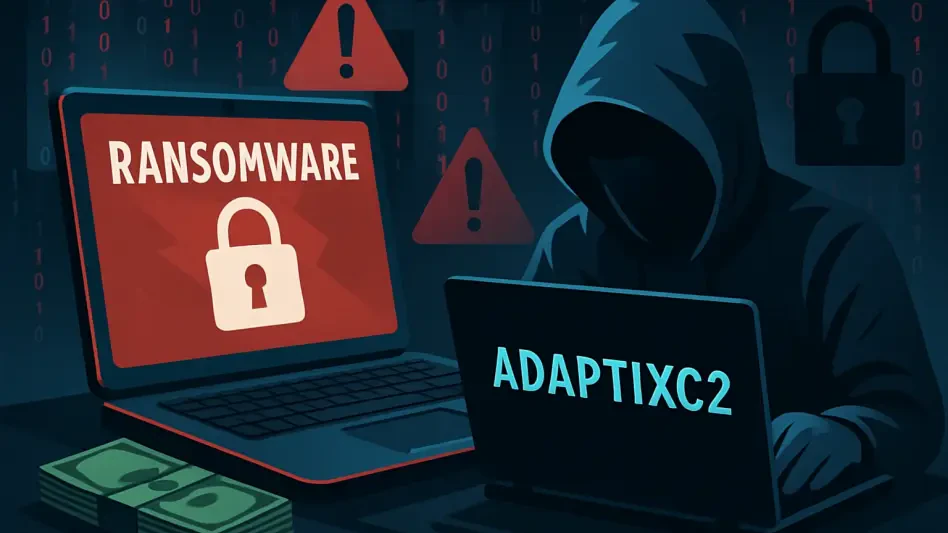In an era where digital interconnectivity defines business operations, a single breach can ripple across entire industries, exposing vulnerabilities in unexpected places, and a recent cyber attack on London North Eastern Railway (LNER), a prominent UK rail operator, has brought this issue into sharp focus. The incident, which saw customer contact details and journey information compromised through a third-party supplier, serves as a stark reminder of how dependent organizations are on external partners for data management. While no financial data or passwords were leaked, the potential for phishing and social engineering attacks looms large. This event is not an isolated case but part of a broader trend where third-party vendors become gateways for cybercriminals, challenging companies to rethink security across their supply chains. The transport sector, in particular, stands out as a prime target due to the vast amounts of sensitive data it handles, raising urgent questions about systemic weaknesses.
Rising Threats in Supply Chain Security
Third-Party Vendors as Weak Links
The LNER breach exemplifies a growing concern in cybersecurity: third-party suppliers often represent the soft underbelly of an organization’s defenses. In this case, unauthorized access to files managed by an unnamed vendor exposed personal data, even though critical financial information remained secure. Experts point out that while the leaked data may seem benign at first glance, it can be weaponized for targeted phishing campaigns or identity theft schemes. Such incidents highlight how interconnected systems amplify risks, as a single vendor’s lapse can jeopardize an entire network. The trend of vendor compromises has surged in recent years, with attackers exploiting these relationships to bypass primary security measures. This underscores a critical need for organizations to scrutinize the security protocols of their partners, ensuring that even peripheral players adhere to rigorous standards to prevent cascading failures across the supply chain.
Cascading Risks Across Industries
Beyond the immediate impact on LNER, the broader implications of third-party breaches are evident in multiple sectors facing similar challenges. Cybersecurity professionals note that attackers increasingly target vendors to gain backdoor access to larger entities, creating a domino effect of vulnerabilities. For instance, data leaks through suppliers can provide cybercriminals with enough information to craft convincing social engineering attacks, undermining even well-protected organizations. The lack of transparency in many vendor relationships further complicates the issue, as companies may not fully understand the security posture of their partners. This gap in oversight can leave sensitive data exposed to external threats or even insider risks within the vendor’s operations. Addressing this requires a shift toward comprehensive risk assessments and shared responsibility, where security is treated as a collective priority rather than an isolated concern for each entity in the chain.
Transport Sector Under Siege
High-Value Targets for Cybercriminals
The transport industry, including rail and aviation, has emerged as a particularly attractive target for cybercriminals due to the sheer volume of personal and operational data it processes. The LNER incident follows a pattern seen in other high-profile attacks, such as the breach at Transport for London (TfL) that compromised customer bank details and disrupted online services. These events reveal how transport firms are not just repositories of valuable data but also critical infrastructure that, if disrupted, can cause widespread chaos. Cyber attackers, including sophisticated groups like Scattered Spider, have been known to employ tactics such as impersonation to circumvent security layers like multi-factor authentication (MFA). The FBI has issued warnings about these evolving methods, emphasizing that transport entities must remain vigilant. This persistent targeting signals a need for sector-specific cybersecurity strategies that account for the unique risks tied to public-facing operations.
Systemic Challenges and Unanswered Questions
Delving deeper into the LNER case, significant uncertainties remain about the nature of the breach, raising concerns about systemic issues within the transport sector’s supply chain. Cybersecurity analysts point out that it’s unclear whether the attack originated from an insider threat at the third-party supplier or an external actor exploiting a technical vulnerability. Some speculate a connection to wider global campaigns targeting platforms like Salesforce, suggesting that this incident might be part of a larger pattern of supply chain attacks. This lack of clarity hampers efforts to devise effective countermeasures, as organizations struggle to pinpoint weak spots in their extended networks. The transport sector’s ongoing battle with cybersecurity is further complicated by the scale of its operations, where even minor data leaks can have outsized downstream effects. Strengthening defenses in this context demands not only technical upgrades but also a cultural shift toward proactive threat anticipation across all levels of service delivery.
Securing the Future of Interconnected Systems
Lessons Learned from Recent Breaches
Reflecting on the LNER breach and similar incidents, it has become clear that third-party vulnerabilities have exposed critical gaps in cybersecurity frameworks. The transport sector, repeatedly targeted by sophisticated attackers, must confront the reality that even non-critical data leaks can fuel further malicious activities. Experts have warned that the interconnected nature of supply chains amplifies these risks, with each breach serving as a painful reminder of the stakes involved. Looking back, the response to such events often reveals a reactive rather than preventive approach, with companies scrambling to mitigate damage after the fact. These past challenges underscore that relying solely on internal defenses is no longer sufficient when external partners can become unwitting conduits for attacks. The urgency to address these weaknesses has never been more apparent, pushing organizations to rethink how they manage vendor relationships.
Building Resilient Supply Chains
Moving forward, the path to resilience lies in adopting a multi-layered approach to cybersecurity that encompasses every link in the supply chain. Organizations must prioritize thorough vetting of third-party suppliers, ensuring that security standards are non-negotiable at every level. Implementing regular audits and fostering transparent communication with vendors can help identify potential risks before they escalate into full-blown breaches. Additionally, investing in advanced threat detection tools and employee training on social engineering tactics can fortify defenses against evolving attack methods. Collaboration across industries to share intelligence on emerging threats offers another avenue to stay ahead of cybercriminals. By treating security as a shared responsibility, companies can create a more robust ecosystem where vulnerabilities are addressed collectively. Ultimately, safeguarding interconnected systems demands a proactive mindset, anticipating risks rather than merely responding to them, to ensure trust and stability in an increasingly digital world.








